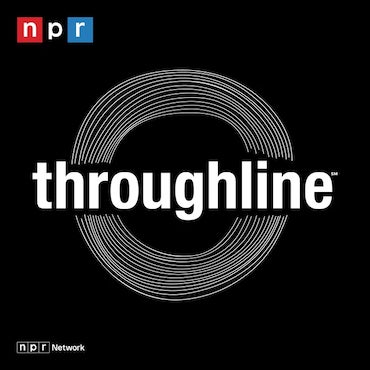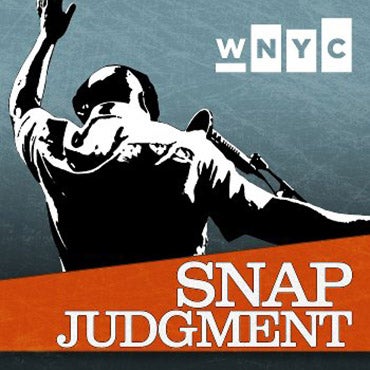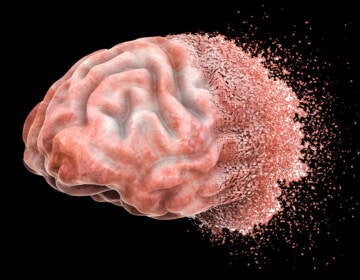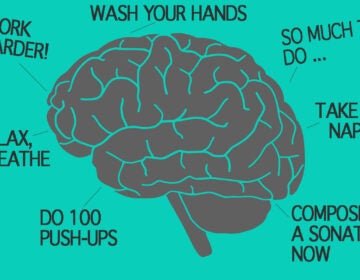What fuels nostalgia?
Nostalgia means everything old can be new again. In the brain, memory meets emotion to make us feel good (mostly) — and sometimes like spending money.
Listen 08:00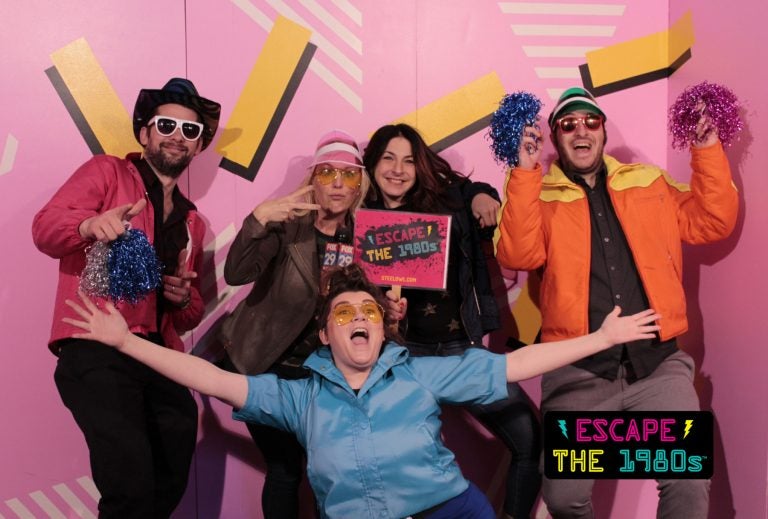
Employees at Escape the 1980s (from left to right): John Foster, Jennaphr Frederick, Elisabeth Garson, Nick Einstman, and Krystle Ann Griffin in the game room's photo booth. (Image courtesy of Escape the 1980s)
Nostalgia is this bittersweet — yet positive emotion — we feel when we harken back in time. Though when Swiss medical student Johannes Hofer coined the term in 1688, it was anything but positive.
Hofer looked at a mysterious disease in a case study that included two subjects. One was a student who’d fallen sick while studying abroad and was sent home to die — only to make a miraculous recovery. The other was a local servant girl who became ill after an accident put her in a hospital far from home. She too recovered once she was back home with her parents.
Hofer proposed that this wasn’t a coincidence, but rather the result of a disease that he named nostalgia. It came from the Greek words “nostos,” meaning homecoming, and “algos,” which means pain.
News of the new malady spread across Switzerland and eventually, across the world, becoming known as the Swiss disease. It turned out to be a handy diagnosis for all kinds of mysterious ailments, from melancholy to cardiac arrest — and was even listed as a cause of death.
Over the course of decades, nostalgia has been transformed, from a physical illness to a psychological condition. Today, it’s anything but a disease — and it can be a marketing tool.
Take the Netflix TV show “Stranger Things,” which is set in the 1980s. It’s helped revive (in a limited-edition collector’s pack) New Coke, which even The Coca-Cola Company quickly turned its back on in favor of the original “classic” formula.
There’s a lot of ‘80s nostalgia out there these days. In Philadelphia, there’s an interactive escape the room game called Escape the 1980s. The game starts out in an ’80s-era video store. To find the way out, players solve puzzles to get a dozen keys, clues or codes and become immersed in a retro universe of shoulder pads, neon colors, and synth music.
The founder of the escape room, Elisabeth Garson, said she chose the ’80s, “because it was one of the best eras of all times and because it appeals to my generation, which is Generation X, but it also really appeals to the following generation, to the millennial generation.”
Andrew Newberg, a neuroscientist at Thomas Jefferson University, defines nostalgia as “a kind of autobiographical memory.”
”Psychologically, people have found that nostalgia can be very beneficial,” Newberg said. “It helps people to be more resilient, to think back on what their life has been up until this point, and gives them some purpose and meaning going forward.”
As for what happens in the brain when we feel nostalgic, Newberg said, it evokes the memory areas of our brain. “These tend to be located in a part of our brain called the temporal parietal region. The parietal lobe is in the back of the brain, and where the two come together is where we have a lot of our memory processes.”
Nostalgia is about memory, but also about emotion. What links the emotion to the memory is another part of the brain called the insula, which Newberg said is not responsible for the actual feeling of emotion, but supports understanding of it. It’s like the translator between our emotional minds and our rational minds.
There’s also evidence that dopamine, the feel-good chemical in the brain, is released when we feel nostalgic, Newberg said. This is where the marketing industry gets interested.
Jonah Berger, an associate professor of marketing at the Wharton School of the University of Pennsylvania, researches social influence, word of mouth, and the reasons why ideas catch on.
“I think people are always interested in harkening back to a simple time,” Berger said. “It reminds them and connects them to things that they’ve loved in the past. And so it’s an interesting way for marketers to stay relevant today.”
That said, nostalgia is not a new phenomenon. Berger said people in the ’80s were nostalgic for the 1950s. People are always harkening back to a time when they were younger and things were simpler.
Shawn Robare runs the nostalgia website Branded in the 80s. It all started back when he was in his early 20s and life was tough. Robare says he was working two jobs to make ends meet, and he felt like he was stuck in a machine.
He wanted to cure his negative feelings by building what he calls a “happy place” for himself — filled with all the cartoons and movies, toys, even cereals – that he loved as a kid.
Thirteen years later, the site is still going strong. Robare made friends through the website, and even met his wife. The site made him feel better, but he realizes there’s an irony to all this.
“One of the things that I think gets lost a lot of the times is that there’s this undercurrent of sadness that defines nostalgia. The whole idea of nostalgia is this want or need for something that you can’t have anymore,” Robare said.
But Robare’s come to accept the fact that he can’t go back in time, he said, that’s the moment when it becomes a little bit more gratifying.
WHYY’s Liz Tung contributed reporting to this article.
WHYY is your source for fact-based, in-depth journalism and information. As a nonprofit organization, we rely on financial support from readers like you. Please give today.
